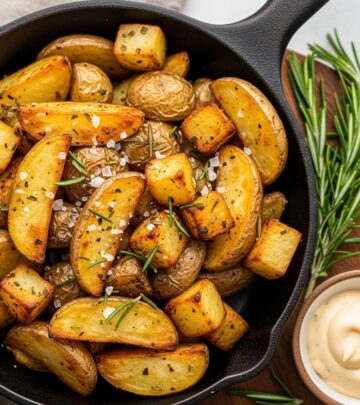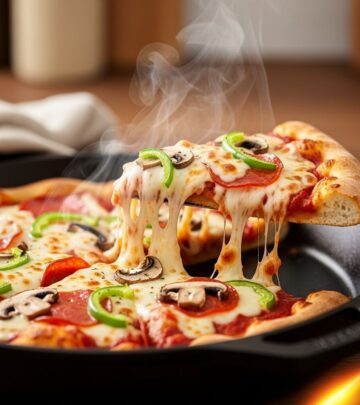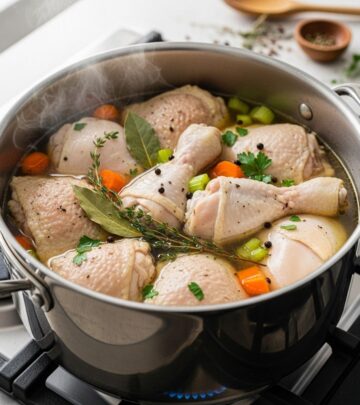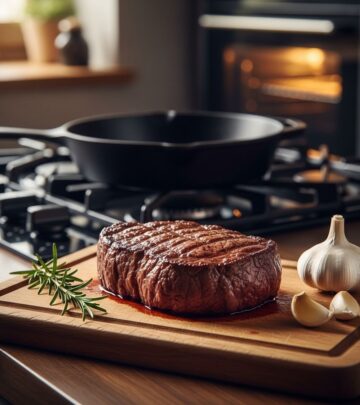Essential Mason Jar Canning Mistakes and How to Avoid Them
Master simple adjustments to secure airtight seals and preserve flavor for every batch.
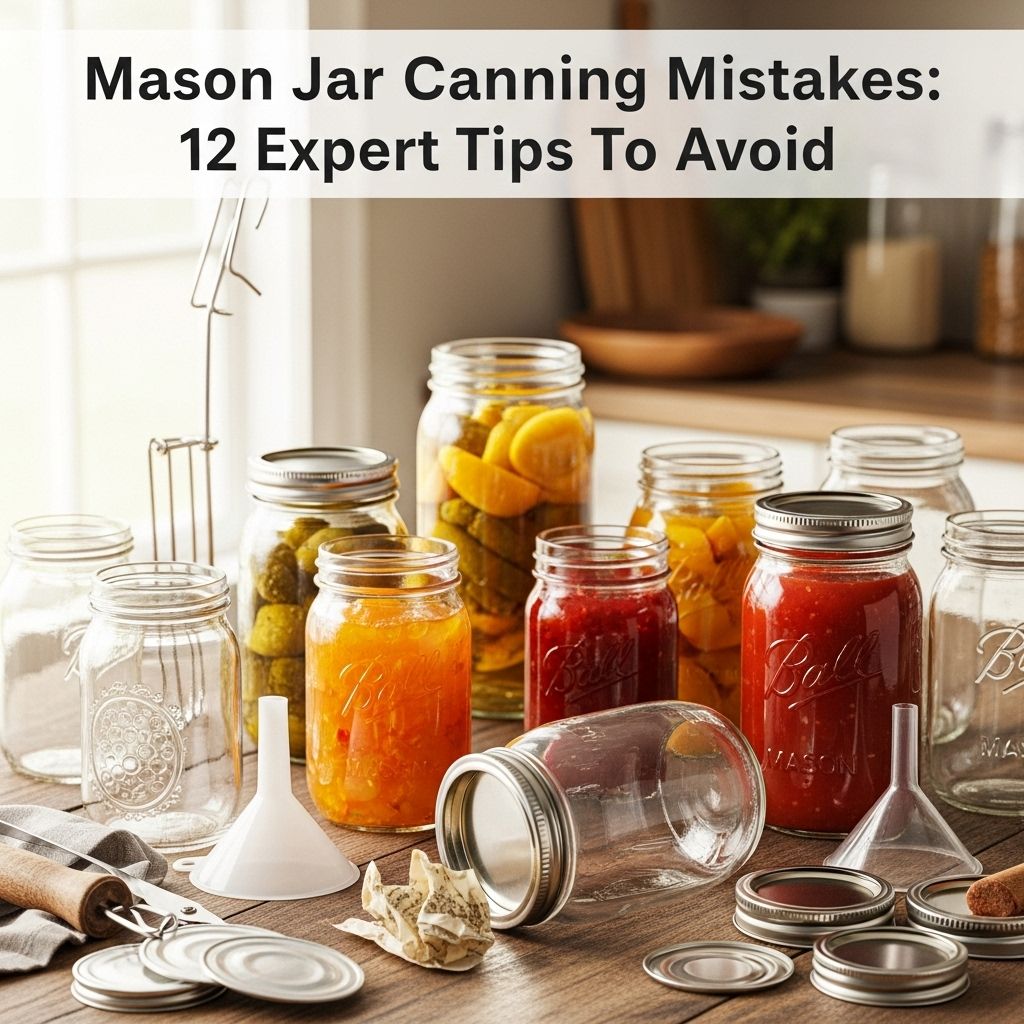
12 Mason Jar Canning Mistakes You Need to Avoid
Canning at home with mason jars is a rewarding way to preserve seasonal fruits, vegetables, jams, and pickles. However, even experienced home canners make mistakes that can undermine food safety or the quality of their preserves. Below, we detail the 12 most common mason jar canning mistakes along with practical advice for how to avoid them. Whether you are new to canning or a seasoned preserver, mastering these tips will help ensure your products are safe, delicious, and shelf-stable.
1. Pre-warming Lids: Is It Necessary?
One persistent myth in canning is that you must pre-warm the metal lids before using them. This step was traditionally recommended, particularly by Ball Brand, but recent quality assurance tests show it is unnecessary. In fact, overheating lids can thin out the rubber gasket, compromising the plastisol seal and increasing the risk of seal failures.
What should you do instead? Simply wash lids in warm, soapy water and rinse. You do still need to warm the jars, especially before hot-packing.
- Warm jars only—never lids.
- Just clean the lids and use at room temperature.
- Avoid overheating to prevent seal issues.
2. Using Metal Utensils to Remove Air Bubbles
Removing air bubbles before processing is crucial to creating a vacuum seal. Many canners use metal utensils for this purpose; however, this should be avoided because metal can etch the glass interior, leading to sudden jar breakage. Instead, use plastic or wooden “bubble freer” tools to shift contents gently.
- Always remove air bubbles before sealing.
- Use plastic or wooden utensils, not metal.
- Metal utensils can damage jars over time.
3. Not Measuring Headspace Correctly
Headspace refers to the gap between your food contents and the lid. It is vital to leave the right amount because:
- Overfilled jars may boil over,
leaving residue and risking seal failures. - Underfilled jars (too much headspace):
not enough air escapes, preventing proper vacuum formation. - Recommended headspace varies by recipe, but use the opposite end of the bubble freer to measure accurately.
Wipe the rim clean after filling to remove any residue, as greasy or pulpy rims can also prevent airtight seals.
4. Using the Wrong Size Jar
Canning recipes specify jar sizes for a reason. Different jar sizes require distinct processing times for heat to penetrate properly. Using a larger jar than recommended can result in improperly processed food and food safety risk.
- Never go up in jar size beyond recipe instructions.
- You may go down a size; just maintain the stated processing time.
- Always follow safety protocols for heat penetration and sterilization.
5. Over-tightening the Lids
Canners often mistakenly use maximum force to screw on the lid rings, but this is a mistake.
- Screw bands on just until you feel resistance (“fingertip-tight”).
- Over-tightening prevents air from escaping during processing, resulting in buckled lids or failed seals.
- After processing, bands may appear to loosen. This is normal.
- Do not retighten bands immediately after processing; this can interrupt the seal formation.
6. Reusing Lids for Food Canning
Reusing mason jar lids for canning purposes is dangerous. The plastisol sealing compound on the lid is spent after one use and cannot reliably reseal.
- Always use a new lid for each round of food canning.
- Reuse old lids only for non-canning purposes—such as crafts.
- Used lids can result in seal failures and food spoilage.
7. Failing to Adjust for Altitude
Altitude impacts the temperature at which water boils—important for food safety. Failing to adjust processing time or pressure when canning at high altitudes can result in under-processed food and possible contamination.
- Adjust processing time and/or pressure as specified in recipes for your altitude.
- Consult reputable altitude adjustment charts before canning.
8. Overfilling Jars
Putting too much food in a jar causes content to spill out and leaves residue on the rim, increasing the risk of seal failures.
- Follow recommended headspace for each food type.
- One-inch headspace is typical, but check your recipe.
- Always wipe jar rims before sealing.
9. Using Metal Tools to Remove Air Bubbles
Repeated for emphasis. Metal tools can etch the glass and cause jar breakage. Always use non-metal tools to shift the food and free trapped air.
10. Using Non-Canning Jars
Not all glass jars are designed for the rigors of food preservation. Never reuse commercial food jars, such as jam or pasta sauce jars, for home canning. Only use jars labeled for canning—those built to withstand the pressure and heat.
- Non-canning jars may break during processing.
- Broken jars can cause food wastage and contamination risks.
- Using the wrong jars can even put you at risk for foodborne illnesses such as botulism.
11. Over- or Under-Tightening Lid Bands
Both over-tightening and under-tightening lid bands can cause problems. Only screw bands on until you feel light resistance—do not use excessive force. After processing, remove bands for reuse; they are only needed to hold the lids on during canning.
12. Wasting Time by Warming Lids
As discussed above, warming lids is unnecessary. You save time and avoid potential damage by skipping this outdated step.
Best Practices for Successful Home Canning
In addition to avoiding these common errors, here are several best practices every home canner should follow:
- Follow USDA-approved recipes for food safety.
- Regularly inspect your jars for cracks or chips before use.
- Use fresh lids and high-quality ingredients.
- Keep jars, bands, and lids scrupulously clean.
- Store your processed jars in a cool, dark place.
- Label jars with date and contents for easy identification.
- Check seals after 24 hours: jars should be firmly sealed with no bulge or movement of the lid.
Frequently Asked Questions About Mason Jar Canning
Q: Why can’t I reuse mason jar lids for canning?
A: The sealing compound on lids is designed for single use. Reusing lids increases the risk of failed seals, resulting in spoiled or unsafe food.
Q: How do I know how much headspace is appropriate?
A: Always follow the specific recommendations in the recipe. Use measuring tools or the opposite end of bubble removers for accuracy.
Q: Do I need to adjust canning times for altitude?
A: Yes. Higher altitudes require longer processing times (or higher pressure) to ensure food safety. Consult reliable altitude adjustment charts.
Q: Can I use jars from commercial foods for canning?
A: No. These jars are not built for home canning and have a high risk of breakage during processing. Always use proper, brand-name canning jars.
Q: Should I warm my jar lids before using?
A: No, it’s outdated advice. Just clean the lids; warming is not necessary.
Canning Mistakes – Quick Reference Table
| Mistake | Why It’s a Problem | Correct Method |
|---|---|---|
| Pre-warming lids | Unnecessary, can thin out gasket | Clean lids only, use at room temp |
| Metal utensils for air bubbles | Can etch glass and cause breakage | Use wood or plastic tools |
| Improper headspace | Leaks, failed seals, poor vacuum | Measure and follow recipe guidance |
| Larger jar size than recipe | Unsafe, improper heat penetration | Use specified jar size only |
| Over-tightening lids | Buckled lids, failed seals | Fingertip-tight only |
| Reusing lids | Seal may fail on second use | Always new lid for each batch |
| Non-canning jars | Risk of jar breakage, food waste | Use canning-grade jars only |
Bonus Tip: Repurposing Old Lids
While used mason jar lids are unsuitable for canning, they can be recycled into creative crafts—plant markers, ornaments, or other decorative projects—giving them a new life outside the kitchen.
Conclusion: Mastering Safe and Delicious Canning
Home canning with mason jars is a blend of science and tradition. By steering clear of these 12 common mistakes and following expert best practices, your preserved foods will taste better and last longer. Celebrate the season’s abundance and enjoy your home-canned goods with confidence.
References
- https://www.jrpiercefamilyfarm.com/blog-1/2019/09/09/20-common-canning-mistakes-you-need-to-avoid
- https://www.countryliving.com/food-drinks/a5204/new-canning-guidelines/
- https://www.countryliving.com/food-drinks/g4818/mason-jar-canning-mistakes/
- https://www.coastalcountry.com/resource/blog-posts/country-kitchen/how-to-avoid-canning-mistakes
- https://www.etsy.com/il-en/listing/810549298/vintage-ball-mason-jar-canning-farm
- https://www.youtube.com/watch?v=izLSVggBt_k
Read full bio of medha deb







